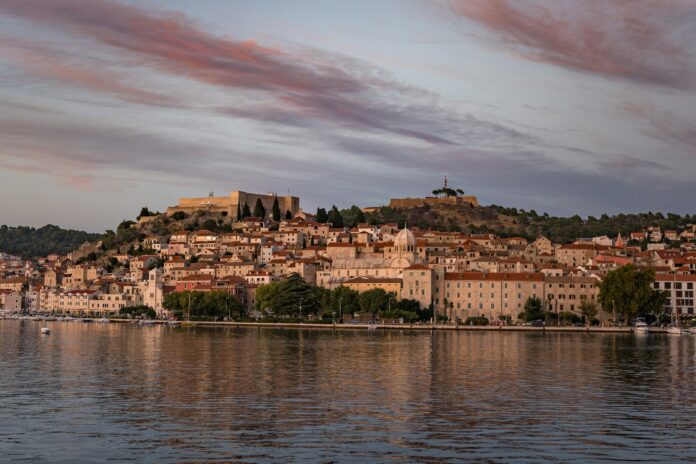Let’s be honest here; the medieval charm and cultural treasures of Krakow could easily fill a week, but venture beyond the city’s cobblestone streets and you’ll discover some of Poland’s most remarkable destinations.
The former royal capital’s central location in southern Poland makes it an ideal base for exploring diverse landscapes and historically significant sites, from underground salt cathedrals to mountain retreats, each offering unique insights into the country’s complex past and vibrant culture.
The beauty of day-tripping from Krakow lies in the extraordinary variety within easy reach. Within two hours’ travel, you can descend into medieval salt mines, stand atop mountain peaks, walk through pristine national parks, or experience profound moments of historical reflection.
Poland’s excellent transport infrastructure, combined with the relatively compact geography of the region, means that even the furthest destinations remain accessible for day visits. Whether you’re drawn to natural wonders, spiritual experiences, or confronting difficult histories, here are 5 of the most essential day trips from Krakow.
Auschwitz-Birkenau Memorial & Museum
Distance: 70km west of Krakow
Travel time: 1.5-2 hours by bus or car
For: Historical education and remembrance
Visiting Auschwitz is not ordinary tourism – it’s a profound act of remembrance at one of history’s most significant sites. The memorial consists of two main sections: Auschwitz I, the original camp housing museum exhibitions behind the infamous ‘Arbeit macht frei’ gate, and Auschwitz II-Birkenau, the vast site where most victims perished.
Preserved as a memorial and museum since 1947, Auschwitz stands as the most powerful symbol of the Holocaust and Nazi genocide. More than 1.1 million people, predominantly Jews from across Europe, were murdered here between 1940 and 1945. Today, it serves not only as a place of mourning but as an educational centre dedicated to preventing such atrocities from recurring.
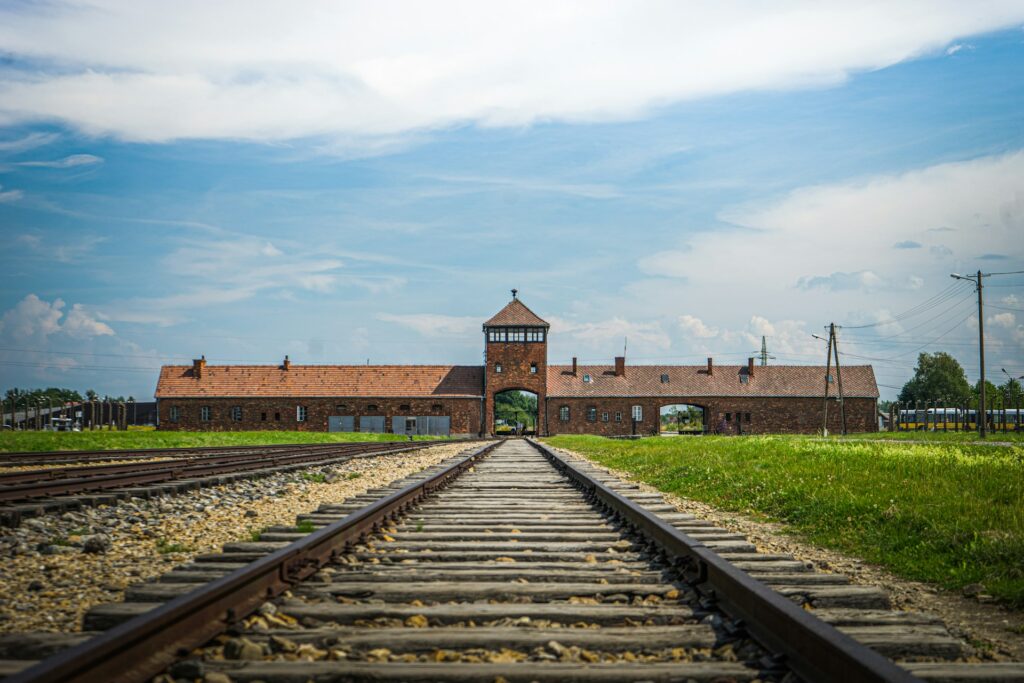
The site’s designation as a UNESCO World Heritage Site in 1979 recognises its universal significance in human history and the imperative to preserve these testimonies for future generations. Each year, nearly two million visitors from around the world come to bear witness, making it one of the most visited memorial sites globally.
Getting there: Regular buses depart from Krakow’s main bus station (MDA) taking approximately 1.5 hours, with some stopping directly at the museum. Trains from Krakow Główny to Oświęcim take 1 hour 40 minutes, followed by a 20-minute walk or short taxi ride. Many visitors choose a Krakow to Auschwitz tour, which includes round-trip transport and scheduled entry times, simplifying the visit.
Planning your visit: The museum is open seven days a week with seasonal entrance hours (7:30 AM – 2:00 PM in December, extending to 7:30 AM – 7:00 PM during summer months). Visitors may remain on site for 90 minutes after the last entrance time. Book well in advance on the official website, as visitor numbers are strictly limited. Guided tours last approximately 3.5 hours and provide essential historical context through licensed educators.
What to expect: Prepare for extensive walking on uneven paths with little shelter, particularly at Birkenau. Photography is permitted in most areas (no flash, tripods, or selfie sticks), but approach the site with appropriate solemnity. Wear comfortable shoes and dress modestly for the weather.
This is a site of genocide and mourning that demands respectful behaviour—quiet conversation, no social media posting on-site, and absolutely no inappropriate photography. Educational preparation through survivor memoirs or documentaries will deepen your understanding of what you witness.
Wieliczka Salt Mine
Distance: 13km southeast of Krakow
Travel time: 30 minutes by car/bus
For: Underground adventure and historical marvels
Descending into the Wieliczka Salt Mine feels like entering a subterranean cathedral. This UNESCO World Heritage site has been continuously operated for over 700 years, creating an extraordinary underground world of chambers, chapels, and sculptures carved entirely from salt.
The mine’s designation as one of the world’s first UNESCO World Heritage Sites reflects its extraordinary cultural and historical significance. For centuries, salt was as valuable as gold, and Wieliczka’s deposits helped fund the Polish kingdom’s prosperity. The underground workings stretch across nine levels and extend to a depth of 327 metres, with over 300 kilometres of galleries—though visitors see only a fraction of this vast network.
What makes Wieliczka truly unique is how miners transformed functional spaces into works of art, carving everything from chandeliers to entire chapels from the rock salt. The tradition continues today, with contemporary artists adding to this underground gallery that spans seven centuries of human creativity and devotion.
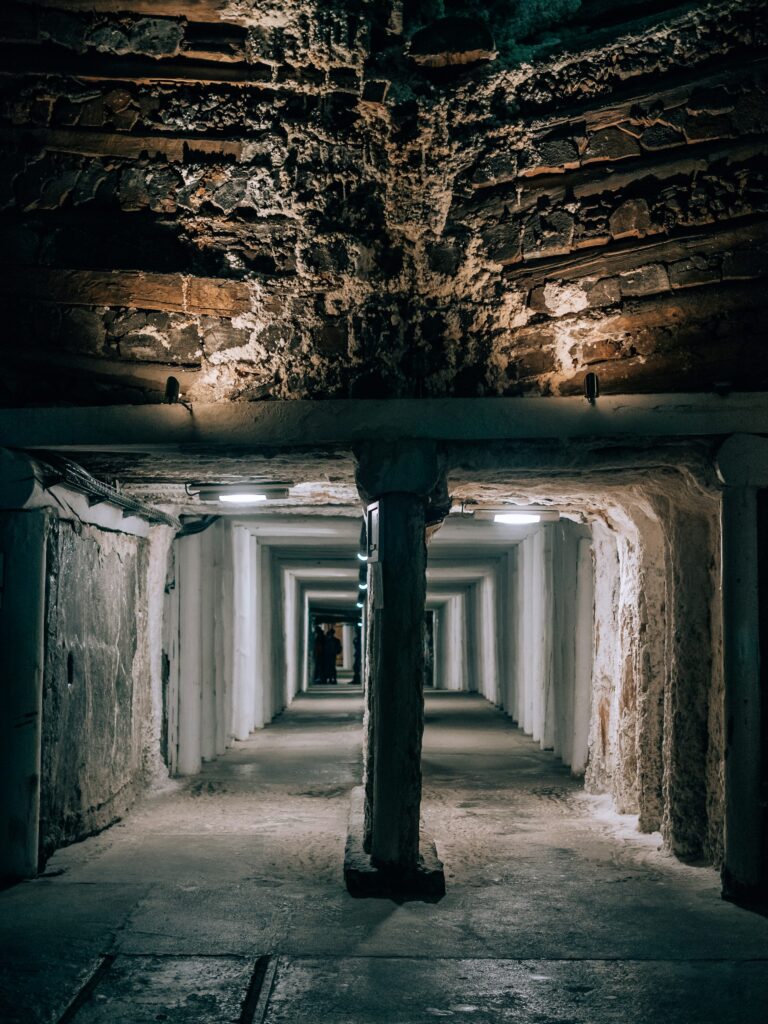
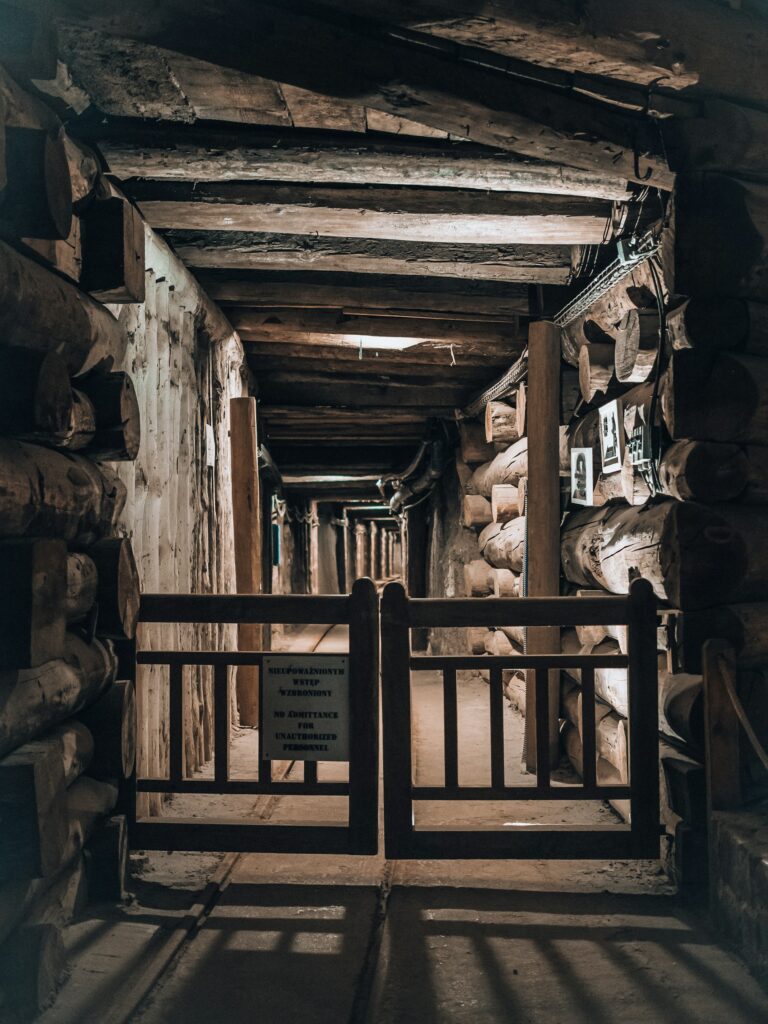
Getting there: Take bus 304 from Krakow’s Galeria Krakowska to Wieliczka Kopalnia Soli stop, or catch a minibus from near the main railway station. The journey takes 30-40 minutes. Many hotels arrange direct transport, or you can join an organised tour.
The experience: The tourist route descends 135 metres underground through 3.5 kilometres of corridors and chambers. Highlights include the breathtaking Chapel of St. Kinga, complete with salt chandeliers and religious sculptures, and the vast Stanisław Staszic Chamber hosting underground concerts and events.
Practical tips: Tours last approximately 2.5-3 hours and involve climbing many stairs (bring comfortable shoes). The underground temperature remains constant at 14-16°C year-round, so bring a light jacket. Book tickets online to avoid disappointment, especially during peak season. The mine also offers adventure routes for more physically demanding exploration.
Read: An alternative 48 hours in Krakow
Zakopane & The Tatra Mountains
Distance: 100km south of Krakow
Travel time: 2 hours by car/bus
For: Mountain scenery, hiking, and highland culture
Nestled beneath the dramatic peaks of the Tatra Mountains, Zakopane offers a complete contrast to Krakow’s urban sophistication. This highland resort town serves as Poland’s winter sports capital and summer hiking base, renowned for its distinctive wooden architecture and vibrant mountain culture.
Zakopane represents the heart of Góral culture, the unique Highland Polish tradition that has flourished in the Tatra foothills for centuries. The town’s distinctive architectural style, characterised by ornate wooden buildings with steep roofs and decorative details, emerged in the late 19th century as a conscious effort to create a uniquely Polish mountain aesthetic.
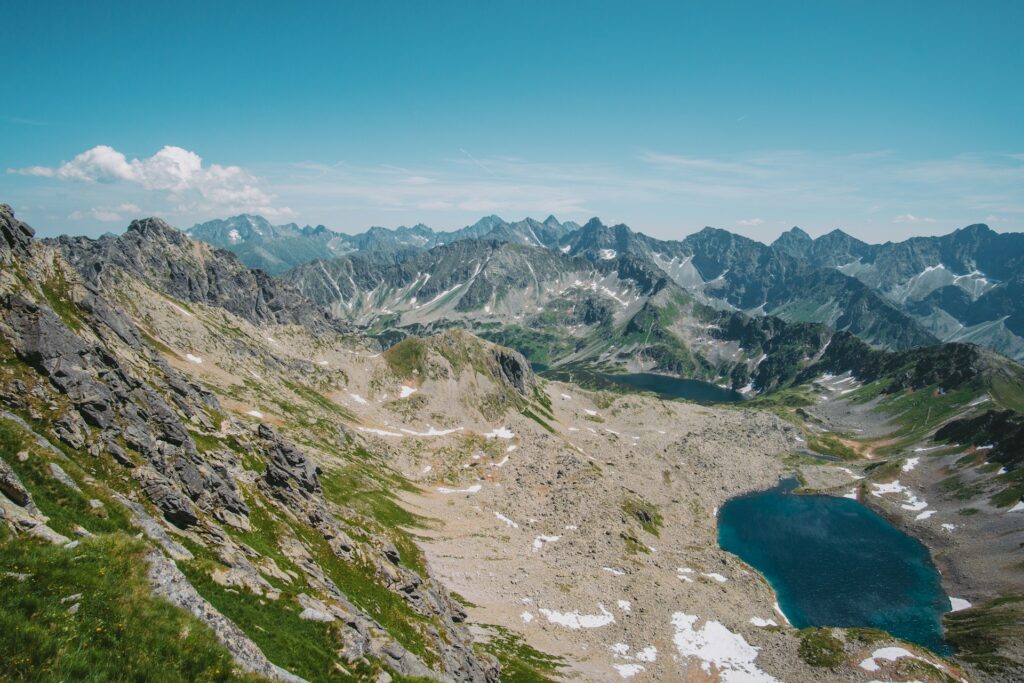

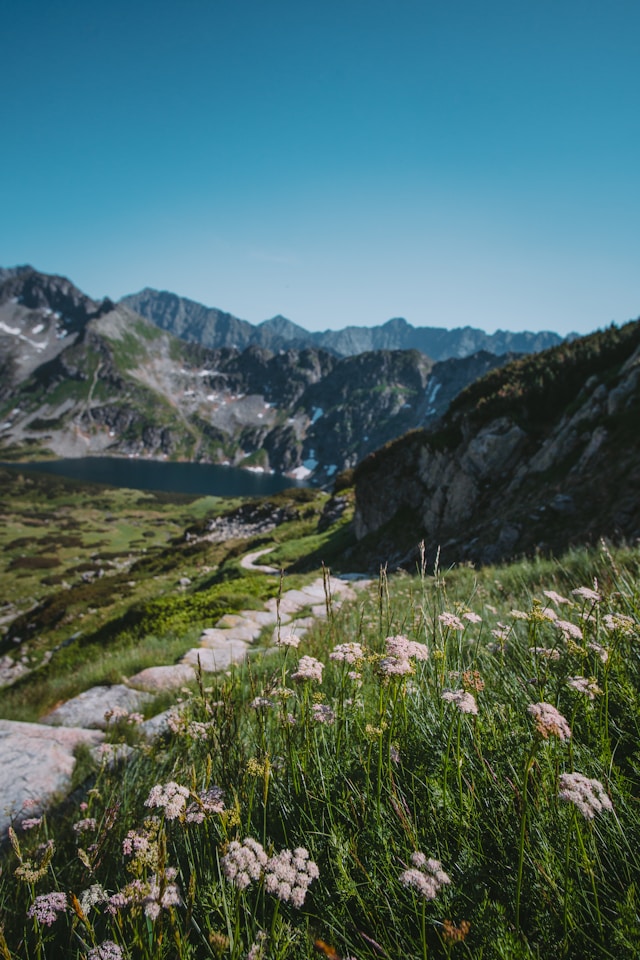
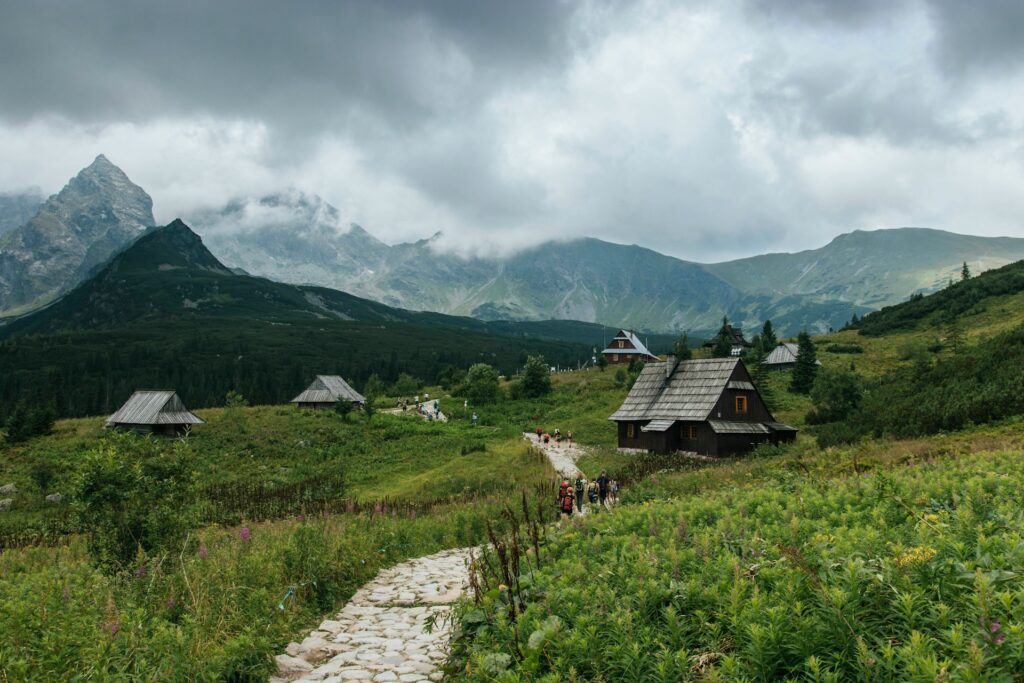
This Zakopane-style influenced architecture throughout Poland and remains a source of national pride. The region is also famous for its folk traditions, including distinctive highland dress, dialect, music, and cuisine. The Góral people, or Highlanders, maintain strong cultural identity through traditional crafts like leather work and the production of oscypek, a smoked sheep’s cheese with protected designation of origin status—a testament to the region’s enduring connection to its pastoral heritage.
Getting there: Regular buses depart from Krakow’s main bus station every 30 minutes during peak season, taking around 2 hours. The journey itself is scenic, passing through rolling countryside before reaching the mountains. Private transport or organised tours offer more flexibility for exploring the region.
Mountain adventures: Take the funicular railway to Gubałówka Hill for panoramic Tatra views without serious hiking, or ride the cable car to Kasprowy Wierch (1,987m) for high-altitude mountain experiences. For keen walkers, the trail to Morskie Oko lake offers moderate hiking through spectacular alpine scenery.
Cultural highlights: Stroll down Krupówki, the bustling pedestrian street lined with traditional wooden houses, local restaurants serving hearty mountain cuisine like oscypek cheese and kielbasa. Visit the Tatra Museum to learn about highland folklore and the unique Góral mountain culture.
Seasonal considerations: Summer offers hiking and paragliding, whilst winter transforms Zakopane into a skiing destination. Spring and autumn provide fewer crowds and stunning seasonal colours, though weather can be unpredictable in the mountains.
Ojców National Park
Distance: 25km northwest of Krakow
Travel time: 45 minutes by car
For: Easy hiking, castle ruins, and natural beauty
Poland’s smallest national park packs remarkable diversity into just 21 square kilometres. The Prądnik Valley’s limestone cliffs, medieval ruins, and unique rock formations create a fairy-tale landscape perfect for gentle outdoor exploration without venturing too far from the city.
Established in 1956, Ojców National Park protects one of Poland’s most geologically fascinating regions, where millions of years of water erosion have carved the Jurassic limestone into extraordinary formations. The park sits within the Polish Jura, a chain of limestone uplands that stretches between Krakow and Częstochowa, creating what’s known as the ‘Trail of Eagles’ Nests’ due to its numerous medieval castles perched on rocky outcrops.
This landscape harbours exceptional biodiversity, with rare plants thriving in the alkaline soil and numerous endemic species found nowhere else in Poland. The park’s location within the Prądnik Valley creates a unique microclimate that has allowed relict species from warmer periods to survive, making it a living laboratory for botanists and ecologists studying how landscapes and ecosystems respond to climatic changes over geological time.
Getting there: Public transport requires changing buses in nearby villages, making car rental or organised tours more practical. The journey through the Polish countryside is particularly beautiful during spring and autumn.
Natural wonders: The park features over 400 limestone caves, with Łokietka Cave open to visitors. Towering rock pillars called ‘clubs’ create dramatic landscapes, whilst the clear Prądnik River winds through the valley floor. Well-marked trails suit various fitness levels, from short walks to longer hiking routes.
Historical sites: Explore the romantic ruins of Ojców Castle perched on a limestone cliff, and visit the 14th-century Gothic chapel hidden in a rocky crevice. The Renaissance Pieskowa Skała castle houses an impressive art collection and offers magnificent valley views.
Wildlife and flora: The park protects rare butterflies, bats, and over 1,000 plant species. Spring brings spectacular wildflower displays, whilst autumn offers golden beech forests and comfortable hiking temperatures.
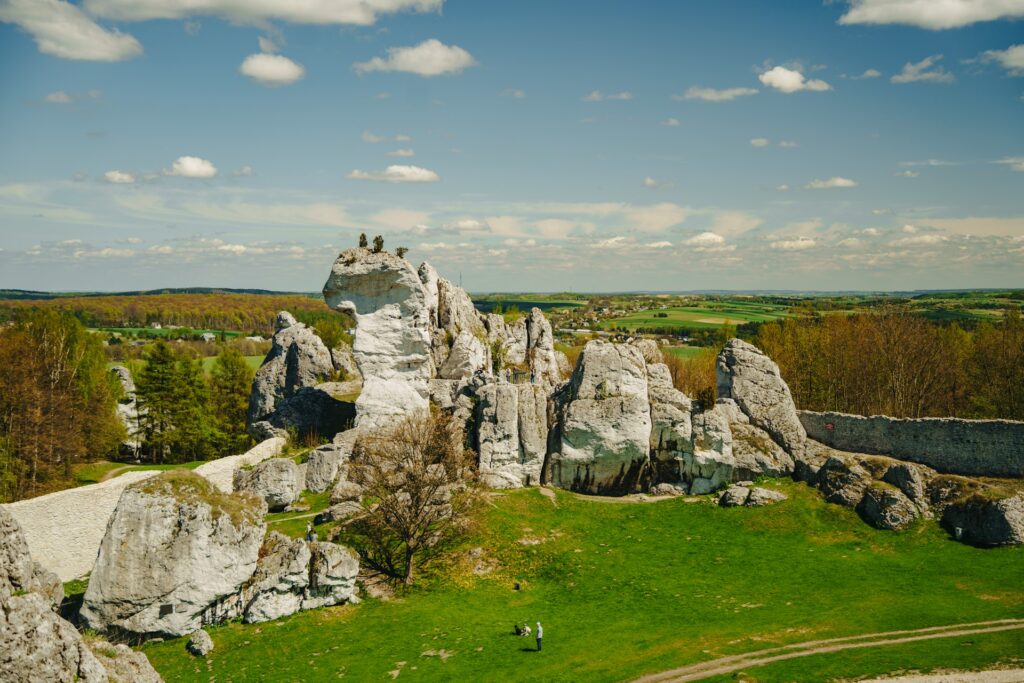
Częstochowa & Jasna Góra Monastery
Distance: 120km northwest of Krakow
Travel time: 1.5-2 hours by car/train
For: Religious pilgrimage and cultural significance
Home to the revered Black Madonna icon, Jasna Góra represents Poland’s spiritual heart and most important pilgrimage destination. This hilltop monastery complex attracts millions of visitors annually, offering insight into the deep Catholic faith that shapes Polish national identity.
The Black Madonna of Częstochowa holds a unique place in Polish consciousness, transcending religious devotion to become a symbol of national identity and resistance. Legend attributes the icon to St. Luke, though art historians date it to the 6th-9th centuries, making it one of Europe’s oldest Marian images. The painting’s history intertwines with Poland’s tumultuous past—it survived the Swedish siege of 1655, when the monastery’s successful defence was attributed to the Virgin’s protection, earning her the title ‘Queen of Poland.’
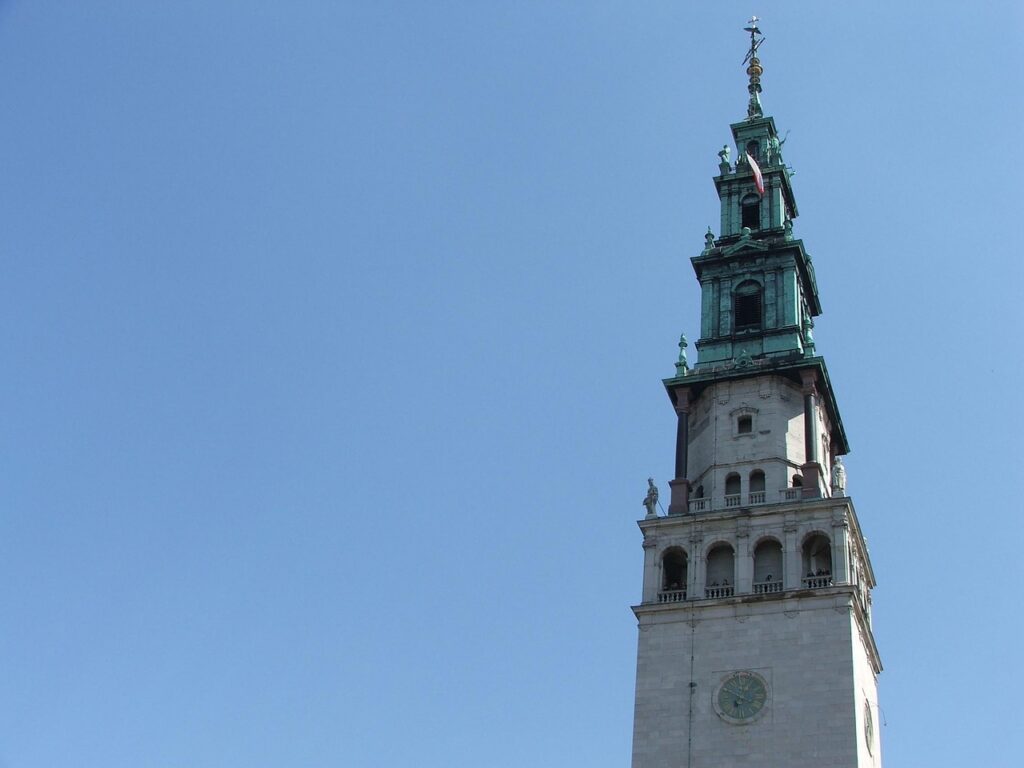
During the communist era, when religious expression was suppressed, pilgrimages to Jasna Góra became acts of quiet defiance, and the Solidarity movement adopted the Black Madonna as an unofficial symbol. Today, the annual walking pilgrimage from Warsaw, attended by hundreds of thousands, demonstrates the enduring power of this medieval icon to unite Polish people across political and social divides.
This tradition of monumental religious expression continues in modern Poland, exemplified by sites like Świebodzin, home to the towering Christ the King statue, reflecting the nation’s ongoing commitment to faith as a cornerstone of cultural identity.
Getting there: Regular trains connect Krakow with Częstochowa in 2-2.5 hours, with the monastery a short walk from the station. Express buses take slightly less time, whilst driving allows flexibility to explore the surrounding region.
The spiritual experience: The focal point is the Chapel of the Miraculous Image, housing the Black Madonna painting attributed to St. Luke. Witness the daily unveiling ceremony (6:00 AM and noon) when curtains reveal the sacred icon amid profound silence from gathered pilgrims.
Monastery highlights: Climb the 106-metre tower for panoramic views across the Silesian landscape. Visit the Treasury showcasing centuries of votive offerings, including papal gifts and precious religious artifacts. The Armoury displays weapons and military memorabilia reflecting the monastery’s role in Polish history.
Cultural context: Jasna Góra has withstood numerous sieges and occupations, becoming a symbol of Polish resistance and independence. The annual walking pilgrimage from Warsaw takes two weeks, demonstrating the site’s enduring significance in Polish culture.
Planning your visit: Allow a full day to properly explore the complex and attend religious services if interested. The site remains active for worship, so dress modestly and behave respectfully. Consider timing your visit with major Catholic festivals for the full pilgrimage atmosphere.
The Bottom Line
One of Europe’s most affordable city breaks, Krakow has so much to offer, not only in the historic capital itself, but also just a day trip away. These five destinations represent different facets of Polish experience—from the depths of human tragedy to spiritual devotion, from centuries of craftsmanship to natural preservation, from highland traditions to geological wonders.
Each demands its own approach: respectful contemplation at Auschwitz, appreciation for human ingenuity at Wieliczka, connection with nature in the Tatras and Ojców, and understanding of faith’s role in Polish identity at Częstochowa. Together, they offer a more complete picture of this complex and fascinating country than any city visit alone could provide.




